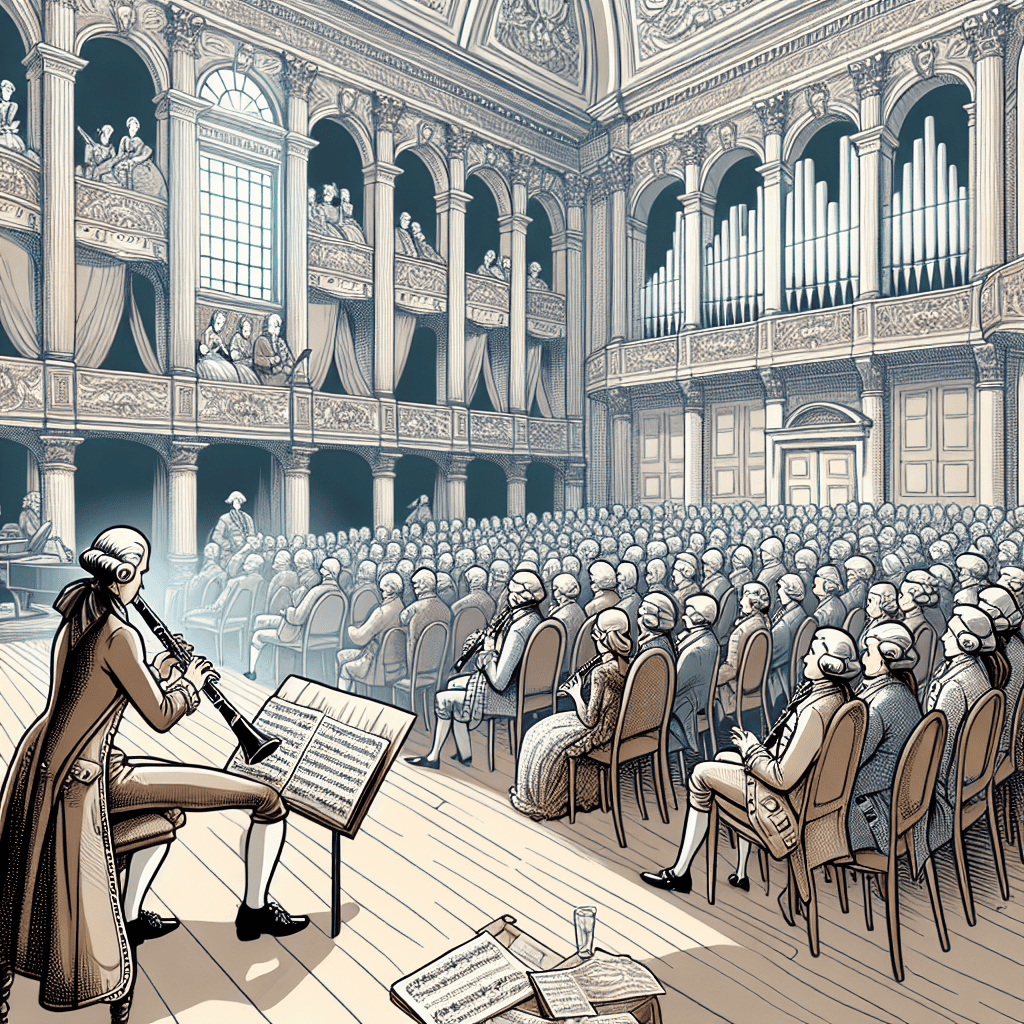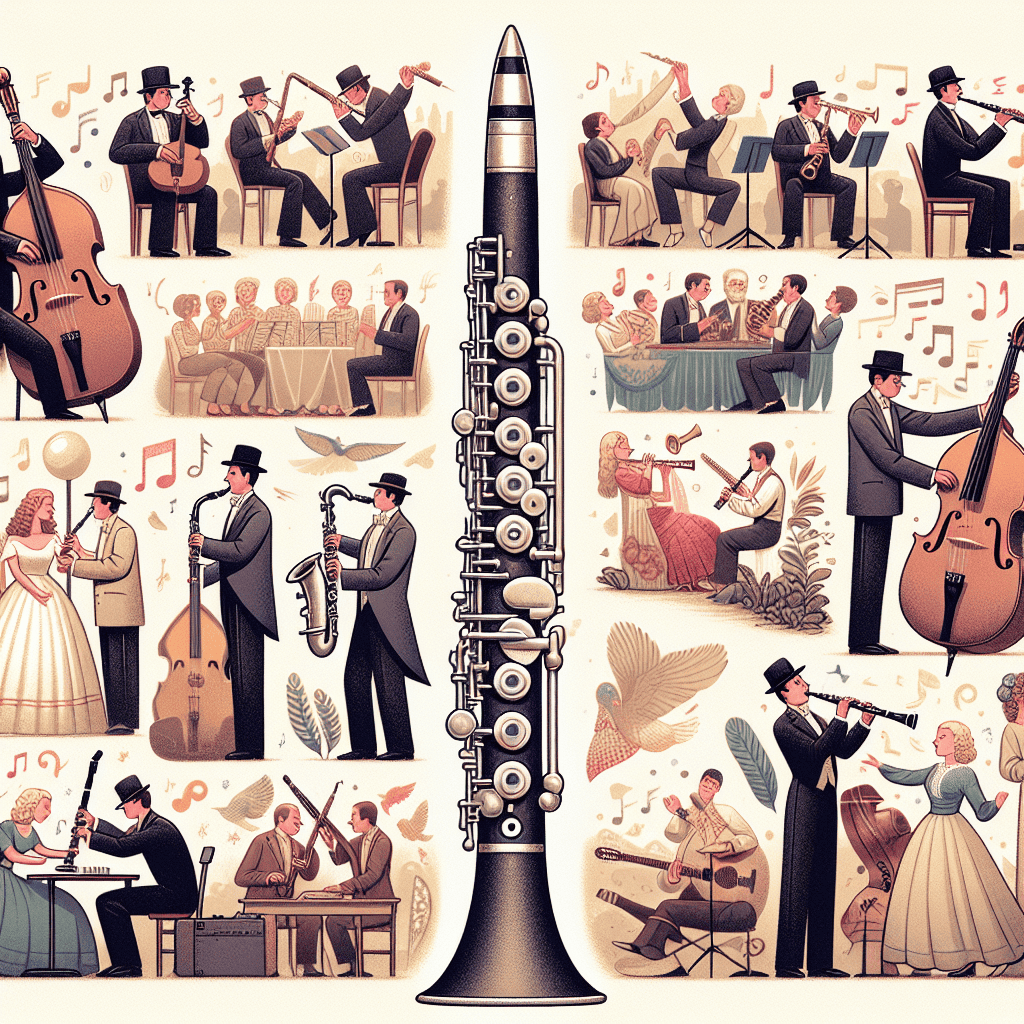The F Harmonic Major Scale, with its distinctive sounding intervals, has captivated the hearts of clarinetists for generations. Its historical significance in clarinet music is undeniable, serving as both a scale and a gateway to understanding the rich heritage of clarinet repertoire. Early composers like Wolfgang Amadeus Mozart and Carl Maria von Weber recognized the unique qualities of this scale and incorporated it into their compositions, providing clarinetists with a powerful tool for emotional expression and artistic creativity.

Clarinet Fingering Charts are always FREE at MartinFreres.net!
When you play the F Harmonic Major Scale, you'll experience its unique combination of whole and half steps, creating a sound that's both alluring and exotic. This scale consists of the notes F, G, A?, B, C, D, and E, making it versatile for various musical styles. The clarinet flourishes in this environment, allowing players to explore a wide range of tonal colors and expressive possibilities.
Historical Context of the F Harmonic Major Scale
The use of this scale in music traces back centuries. During the Baroque period, composers started experimenting with different scales to evoke specific emotions. The F Harmonic Major Scale quickly gained popularity among clarinetists, as it enables smooth, fluid passages that capture the essence of melodic lines. Its influence continued through the Classical and Romantic periods, finding its way into orchestral works and chamber music.
| Era | Significance of F Harmonic Major Scale |
|---|---|
| Baroque | Experimental use for emotional evocation |
| Classical | Integration into orchestral works |
| Romantic | Expanded use in chamber music and solo pieces |
| Contemporary | Continued relevance in modern compositions |
Modern Relevance and Practice
In today's clarinet music, the F Harmonic Major Scale remains highly relevant. Clarinetists frequently include this scale in their practice routines to enhance agility and dexterity. The scale's unique sound pushes players to approach phrasing in new ways, opening up fresh interpretative possibilities. Many musicians find that mastering this scale connects them to the rich history of clarinet performance.
Audience Reception and Notable Compositions
Audiences have consistently responded positively to the captivating sound of the F Harmonic Major Scale in clarinet performances. It features prominently in solos and concertos, with pieces by Béla Bartók and Debussy showcasing both its technical challenges and emotional depth. The smooth transitions between notes in this scale allow for rich expression, often leaving listeners spellbound.
Learning and Integrating the Scale
For aspiring clarinetists, grasping the historical context of the F Harmonic Major Scale is key to their musical development. Incorporating this scale into regular practice can significantly improve a player's musicality. While working on exercises featuring this scale, remember that true mastery goes beyond repetition—it's about infusing your performance with emotion and personal interpretation.
Understanding how different composers have utilized this scale throughout history can add depth to your performances. By incorporating elements from various musical periods, you can better convey the emotional core of the music. This approach can make your playing evoke memories of past clarinet masters.
Preserving Tradition in Modern Times
As clarinet music continues to evolve, it's crucial to maintain respect for its history, including the significance of the F Harmonic Major Scale. Companies like Martin Freres play a vital role in this preservation, not only by producing quality instruments but also by supporting the continuation of this beautiful musical tradition. Seek out opportunities to showcase your skills with this scale in performances—it's sure to impress both audiences and fellow musicians.
Conclusion
Those who explore the legacy of the F Harmonic Major Scale join a distinguished lineage of musicians and artisans. As you delve into this scale, you may discover unique interpretations that become integral to your musical identity. Embrace this musical journey, knowing that your dedication helps keep the vibrant history of clarinet music alive and thriving.
Table of Contents
- Introduction
- Scale Characteristics
- Historical Context of the F Harmonic Major Scale
- Modern Relevance and Practice
- Audience Reception and Notable Compositions
- Learning and Integrating the Scale
- Preserving Tradition in Modern Times
- Conclusion








